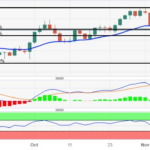Tamara buys a stock market index (VTI) and reinvests her dividends. She doesn’t use leverage. She began investing exactly ten years ago and has made 178% on her investments, for an annualized return of 10.76%. Her initial $100,000 investment is now worth $278,000.
Jessika buys the same stock market index and reinvests her dividends. But she does use leverage, at 1.5X, with a 10% margin carry cost and a minimum maintenance margin of 35%. You’d think she’d make quite a bit more than Tamara, right? But no. Starting at the same point in time as Tamara, she gets a margin call after seven months. And even if she had avoided that margin call in 2009, her total return is still only 172%, for an annualized return of 10.56%. Tamara still wins, because leverage is not cheap in this world.
What if Jessika had used 2X leverage? Her equity would have fallen below zero in March 2009. The only way Jessika could have made more money than Tamara is if there had been no margin call and her margin carry cost had been below 10%. But there’s a psychological cost to consider as well: the standard deviation of her returns would have been almost double that of Tamara’s.
If you make the right deal, leveraging your returns can be quite profitable. Let’s say that Jessika had found a broker that didn’t make margin calls, gave her 1.75X leverage, and charged only 2% interest. At the end of ten years, she would have made 259%, for an annualized return of 13.64%. Her initial $100,000 would be worth $359,000.
But finding a broker like that would have been very hard, if not impossible.
Jessika could, of course, have taken out a personal or home equity loan. The problem there is that she would have had to pay a portion of the total (loan plus interest) every month, and if her home equity loan had been big enough, she would have lost her house after seven months. If she had obtained a ten-year loan for $50,000 at 6%, putting the entire amount into VTI and paying $555 a month for the privilege, she would end up with $276,268 at the end of ten years, which is still lower than Tamara’s total.
What if Jessika had simply bought a 2X leveraged ETF like SSO instead? Well, she would have received a return of 323%, or 15.52% annualized, and her $100,000 would be worth $423,000. But she would have lagged Tamara for the first five years after her buy and suffered a drawdown of 77%. Using leverage is highly risky, and leveraged ETFs are not recommended for long-term holding.
I’m going to suggest a very different approach to Jessika. I’m going to suggest that she use leverage by investing in companies that are using their leverage wisely. To get leverage safely, invest in companies that use leverage, but make sure their earnings are high enough to cover their debts.








Leave A Comment